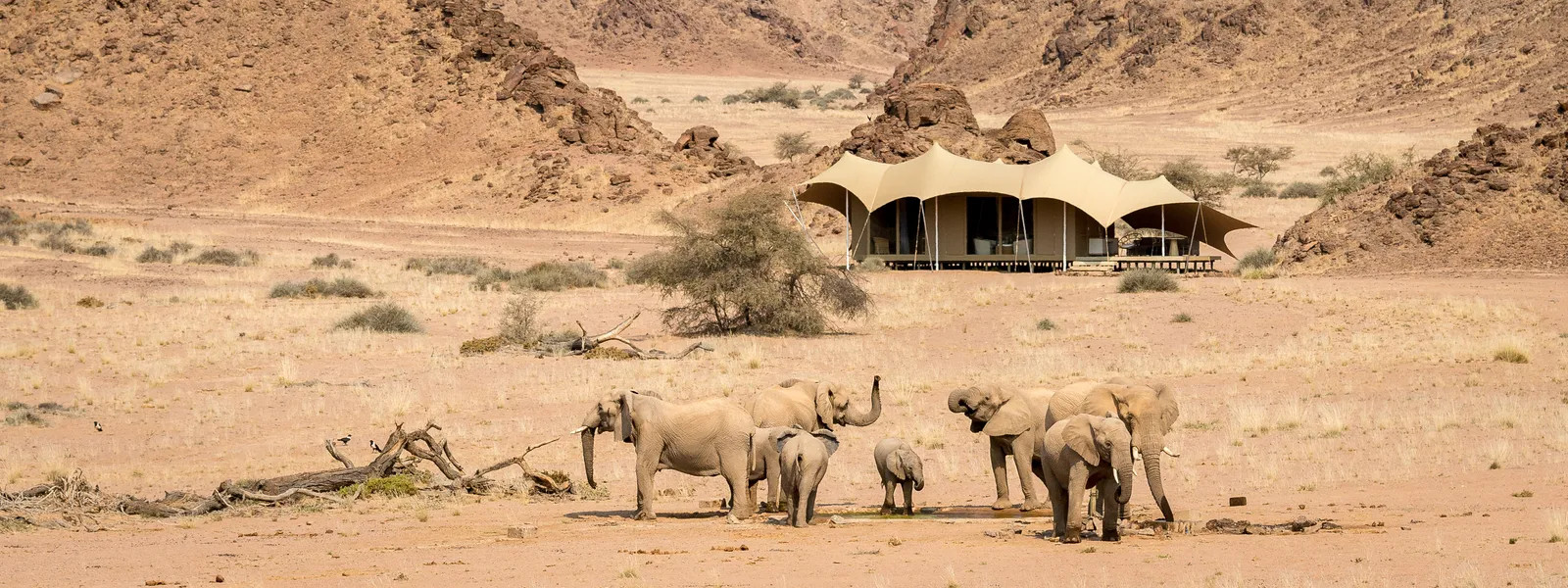Skeleton Coast

SKELETON COAST
The Skeleton Coast is one of our planet’s most beautiful places. Over much of the past decade, access to this private area within the National Park has been restricted. However, nearly 660,000 acres of the National Park have been set aside as an exclusive safari experience for those who want to really get away! It is wild, desolate and uninhabited…and stunningly beautiful. The area has everything, from soaring sand dunes that roar, wonderful vast, pastel colored plains, towering canyons and mountains, salt pans to seal colonies to ship wrecks. This coastline is so named for the many skeletons of shipwrecks and whales that dot the treacherous coast of this park.
The freezing Benguela Current of the Atlantic sweeps up from Antarctica and meets the hot dry air of the Namib, resulting in thick morning fog, which blankets the region. This unusual weather condition brings life-giving moisture to an otherwise arid land and sustains a host of desert animals. Fresh water springs permeate the barren sands to create rare oases in the desert that sustain pockets of wildlife. Springbok, gemsbok (oryx), the rare desert elephant, Cape fur seals, brown hyena, jackal, ostrich and occasionally even cheetah eke out an existence in this rugged terrain, alongside the desert-adapted vegetation such as the ancient Welwitschia plant and Lithops, the succulent “flowering stones”. You are also able to visit authentic Himba settlements, just outside the park, for an incredible cultural experience.
Climate
The Skeleton Coast is subject to a dry winter (May to October), with minimal rainfall. The winter months are also characterized by cool winds blowing in from the west, and heavy fog, particularly in the morning. Summer (November to April) sees a continuation of the fog, though it diminishes slightly. There’s also increasing rainfall and warmer temperatures.
How to get there
When entering from the south, the Skeleton Coast NP is located 200km/124mi from the town of Swakopmund and 485km/300mi from Windhoek. A special permit to enter parts of the park needs to be obtained by all visitors. Most people who want a taste of the Skeleton Coast drive up as close as Cape Cross seal colony, which is about 100km/62mi south of the park entrance. Self-drive visitors, and most organized tours, start their journey via 4x4 in Windhoek. Hosea Kutako International Airport (WDH), your point of entry, is located just 40km/25mi east of Windhoek. An alternative is to arrange a trip which reaches different destinations via chartered flight.
What to See & Do
The Skeleton Coast is not a prime wildlife destination. Most people who visit this area stop prior to reaching the national park at Cape Cross seal colony. Similar, less accessible colonies can be found inside the park, including a huge colony at Cape Fria further north. They attract scavengers like brown hyena and black-backed jackals. Other marine wildlife includes Heaviside's dolphin and green turtle. The Skeleton Coast is a rewarding birding destination. Many marine species can be found, as well as wetland species, which inhabit the river deltas. Although numerous bird species are present, accessibility in the park is limited and most species can be found more easily south of the park. Migratory birds are present from November to April.
Best Time to Visit
Skeleton Coast can be visited throughout the year, but the ideal time is during the warmer months from October to March. These months see a little bit of rain, which keeps the skies clear. Mornings are not as foggy and it’s warmer at night than in the winter months. A downside of these months is that wildlife viewing in Etosha NP is a lot less productive, but this is only relevant if visiting both parks.